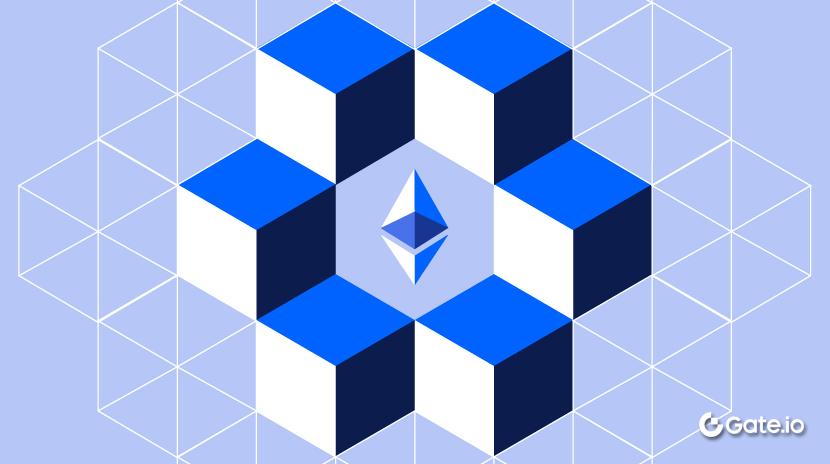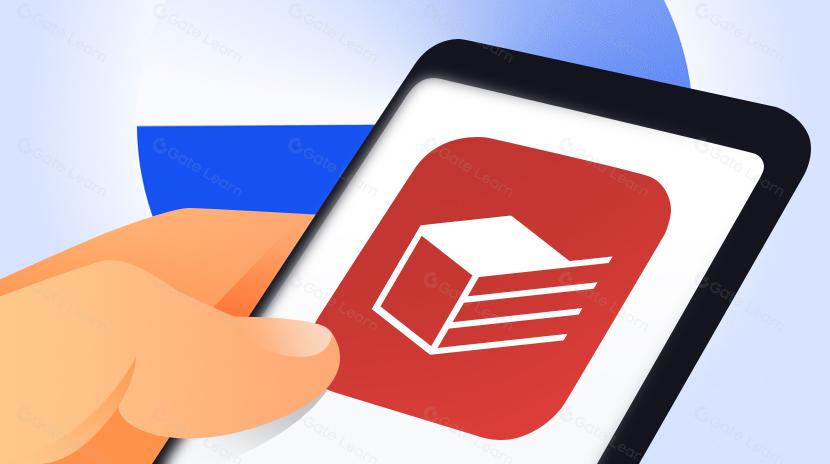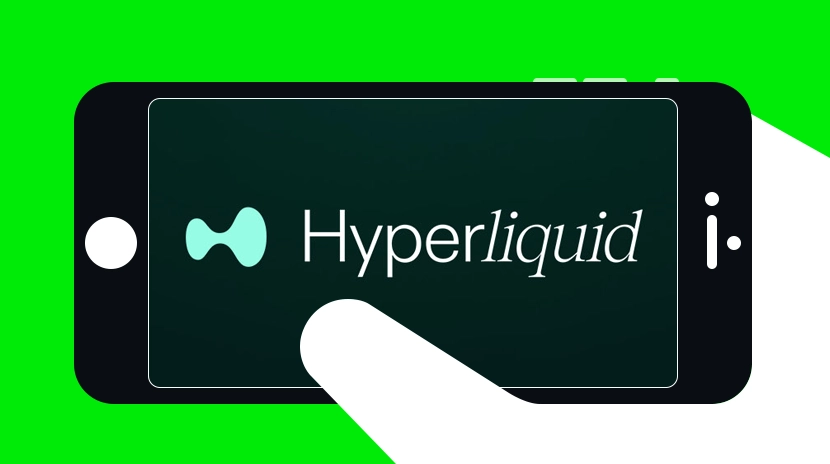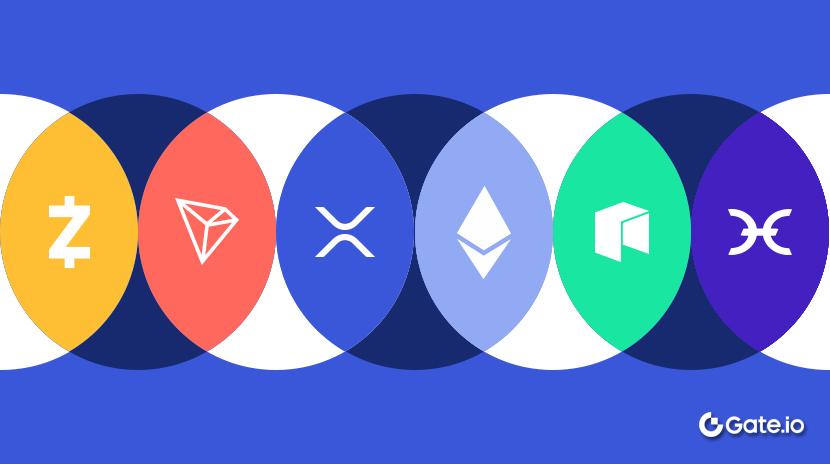Apa itu IMPT? Semua yang Perlu Anda Ketahui Tentang IMPT
Pemanasan global telah muncul sebagai salah satu isu paling kritis bagi umat manusia, dengan naiknya permukaan laut, peningkatan suhu global, dan emisi CO₂ yang mengkhawatirkan menciptakan tantangan lingkungan yang belum pernah terjadi sebelumnya. Menurut Badan Energi Internasional, emisi gas rumah kaca mencapai lebih dari 40 gigaton pada tahun 2021, dan pengurangan yang mendesak diperlukan untuk menghindari konsekuensi iklim yang menghancurkan. Saat dunia beralih ke solusi yang mempromosikan netralitas karbon, pasar kompensasi karbon terbukti menjadi alat yang praktis. Salah satu platform inovatif yang menghubungkan individu dan bisnis ke dampak lingkungan adalah IMPT, memungkinkan kompensasi karbon yang dapat diakses dan transparan melalui teknologi blockchain.
Apa itu IMPT (IMPT)?
Didirikan pada tahun 2022 oleh Denis Creighton, Mike English, dan Hugh Phelan, IMPT memulai perjalanannya untuk membuat platform yang didukung oleh blockchain untuk melawan perubahan iklim. Denis Creighton, CEO IMPT, membawa pengalaman kepemimpinan eksekutif selama lebih dari 30 tahun di berbagai layanan keuangan, TI, telekomunikasi, dan industri BPO, dengan fokus kuat pada startup yang mengganggu. Mike English, CTO proyek, adalah arsitek teknologi veteran dengan pengalaman dua dekade dalam menyediakan solusi skala global untuk perusahaan seperti Oracle, Tesco, dan Google, termasuk platform belanja online terbesar di dunia. Sebagai Chief Legal Officer, Hugh Phelan memiliki pengalaman hukum selama lebih dari 30 tahun dalam kontrak komersial dan kepatuhan kontrak pintar, memberikan nasihat kepada perusahaan teknologi multinasional tentang regulasi blockchain yang muncul.
IMPT.io dengan cepat mengumpulkan $5 juta dalam waktu hanya dua minggu selama masa pra-penjualan, menandai salah satu peluncuran token kripto hijau paling signifikan, didorong oleh minat kuat dari investor yang berfokus pada ESG.
Pada kuartal ketiga 2022, IMPT meluncurkan penjualan seed, situs web, kontrak pintar, serta whitepaper, dan kehadiran media sosial. Hingga kuartal keempat 2022, proyek ini telah mengadakan dua penjualan pra, dan membakar lebih dari 238 juta token IMPT. Peluncuran kontrak pintar NFT dan prototipe pasar awal menandai kemajuan teknis awal.
Pada Q1 2023, IMPT meluncurkan pasar kredit karbon, pasar sekunder, dan platform belanja yang diperluas. Ini diikuti pada Q2 2023 dengan peluncuran aplikasinya di Google Play dan Apple App Store, bersama dengan modul loyalitas, staking, dan penyebaran global. Q3 2023 memperkenalkan voucher offline, pengiriman B2B, dan ekspansi regional. Pada Q4 2023, IMPT telah memperbarui situs webnya dan fokus pada belanja aplikasi, sambil melanjutkan strategi pertukaran terpusat (CEX)-nya.
Pada tahun 2024, IMPT meluncurkan fitur gamifikasi, program referral, dan peningkatan pengalaman pengguna di Q1. Kuartal kedua melihat peningkatan aplikasi belanja dan dasbor, peningkatan staking, dan strategi pembakaran bulanan. Pada Q3 2024, fokus beralih ke peningkatan teknologi ritel, penargetan pasar hijau, dan sumber daya pendidikan. Pada Q4 2024, IMPT mulai mengimplementasikan strategi kredit karbon dan menyelesaikan rencana pembakaran dan pendanaan untuk 2025.
Di bawah kepemimpinan tim pendiri yang berpengalaman—Creighton dalam operasi, English dalam teknologi, dan Phelan dalam kepatuhan hukum—IMPT terus memajukan misinya: membuat keberlanjutan dapat diakses dan memberikan imbalan melalui ekosistem berbasis blockchain yang memberikan insentif yang memberdayakan pengguna dan merek untuk mengurangi jejak karbon mereka.
Bagaimana IMPT Bekerja? Kegunaan dan Komponen
Kegunaan IMPT berpusat pada aksesibilitas, sehingga mudah bagi individu dan bisnis untuk berkontribusi secara berarti pada tindakan iklim tanpa mengganggu kehidupan sehari-hari mereka. Platform ini terstruktur untuk mengintegrasikan keberlanjutan ke dalam perilaku konsumen rutin, memungkinkan pengguna untuk mengimbangi jejak karbon mereka melalui pengalaman digital yang mulus. Pada intinya, IMPT menghubungkan pengguna dengan lebih dari 20.000 pengecer mitra—termasuk nama-nama besar seperti Amazon, AliExpress, dan eBay—melalui antarmuka belanja yang melacak pembelian dan memberi pengguna imbalan dengan kredit karbon. Proses ini dimulai dengan berbelanja, baik secara online maupun di toko. Pengguna dapat dengan mudah memindai struk belanja mereka melalui aplikasi untuk mengklaim imbalan untuk pembelian offline. Pembelian-pembelian ini mendapatkan hingga 45% kembali dalam bentuk poin IMPT, yang kemudian dapat dikonversi menjadi kredit karbon ter-tokenisasi.

Sumber: impt.io
Kredit karbon ini berfungsi sebagai kendaraan untuk tindakan iklim. Setelah mengumpulkan poin, pengguna dapat menjelajahi daftar terkurasi dari proyek lingkungan yang diverifikasi, seperti program penghijauan, pengembangan energi terbarukan, dan inisiatif konservasi, yang disertifikasi oleh organisasi independen pihak ketiga. IMPT memastikan bahwa setiap proyek yang terdaftar memenuhi standar ketat untuk transparansi dan efektivitas. Setelah proyek dipilih, pengguna dapat mengonversi poin yang terakumulasi atau membeli token IMPT secara langsung untuk mendanai kredit karbon dan mendukung inisiatif yang dipilih. Kredit dimulai hanya dari $5, membuatnya dapat diakses oleh banyak peserta.
Salah satu pembeda kunci dari IMPT adalah penggunaan teknologi blockchain. Integrasi platform dengan blockchain memastikan transparansi, kepercayaan, dan ketelusuran di seluruh ekosistem. Kredit karbon ter-tokenisasi dicatat secara tidak dapat diubah pada blockchain, menghilangkan kemungkinan penipuan atau penghitungan ganda, masalah yang selama ini menghantui pasar kompensasi karbon. Setiap kredit mencerminkan pengurangan emisi gas rumah kaca yang sebenarnya, dapat diaudit.
IMPT beroperasi di blockchain Ethereum, menggunakan token ERC-20 untuk memastikan transaksi yang transparan dan aman. Token-token ini digunakan untuk membeli kredit karbon, yang kemudian dikonversi menjadi NFT. Pendekatan ini memanfaatkan infrastruktur yang kuat dari Ethereum untuk mendukung inisiatif lingkungan.
Komponen
IMPT dibangun di atas ekosistem modular yang terdiri dari komponen-komponen yang saling terhubung yang memfasilitasi offset karbon yang dapat diakses, transparan, dan diverifikasi. Di pusat platform adalah Pasar Karbon IMPT.io, di mana pengguna dapat mengakses seleksi global dari proyek lingkungan yang terverifikasi yang bertujuan untuk mengurangi atau menghilangkan emisi karbon. Proyek-proyek ini bersertifikasi oleh otoritas terkemuka seperti Standar Karbon Terverifikasi Verra dan Gold Standard, dan mereka mencakup berbagai kategori seperti penghijauan kembali, penangkapan metana, pengembangan energi terbarukan, dan penyimpanan karbon. Keragaman ini memastikan bahwa individu dan bisnis dapat memilih inisiatif lingkungan yang paling sejalan dengan nilai atau tujuan operasional mereka. IMPT hanya mencantumkan proyek-proyek yang telah lulus audit pihak ketiga dan mematuhi semua regulasi pasar karbon.
Saat seorang pengguna memilih proyek dan mengumpulkan token IMPT yang cukup melalui belanja atau pembelian langsung, kredit karbon ditokenisasi menjadi NFT. Proses ini dilakukan sepenuhnya oleh IMPT untuk memastikan keamanan dan akurasi. Kredit yang ditokenisasi hanya ada sebagai NFT pada blockchain publik, memungkinkan pengguna untuk melacaknya dalam registri terdesentralisasi. Kerangka kerja ini menghilangkan risiko penipuan atau penghitungan ganda—masalah yang sudah lama ada di pasar karbon tradisional—dengan secara permanen menghapus NFT yang sudah pensiun dari peredaran melalui pembakaran berbasis blockchain. Semua aktivitas terkait penerbitan, transfer, atau pensiun dapat diverifikasi secara publik, memungkinkan transparansi dan auditabilitas penuh.
Pengguna dapat menyimpan, menjual, atau menghapus kredit karbon ini. Pasar memungkinkan penawaran dan perdagangan kredit ter-tokenisasi menggunakan token IMPT. Ketika pengguna membakar NFT untuk menghapus kredit karbon mereka, mereka ikut serta dalam restorasi lingkungan dan menerima NFT koleksi unik yang dibuat oleh seniman. Barang-barang ini dimiliki bersama oleh pembakar dan seniman, memperkenalkan insentif kreatif untuk berpartisipasi. Pengguna kemudian dapat menyimpan atau menukarkan koleksi ini, menyatukan dampak lingkungan dengan kepemilikan digital.
Platform Belanja IMPT.io adalah penggerak utama dari generasi token. Dengan jutaan produk dari lebih dari 20.000 pengecer global, pengguna menghasilkan token IMPT secara pasif melalui pembelian sehari-hari. Setiap merek menyumbangkan sebagian dari margin penjualannya untuk inisiatif iklim. Misalnya, jika seorang pengguna menghabiskan $7.332 secara tahunan rata-rata (sesuai tren konsumen AS), dan setiap merek menyumbangkan 2% dari penjualannya, pengguna tersebut dapat mengumpulkan lebih dari $147 dalam nilai IMPT, setara dengan setidaknya 14 kredit karbon secara tahunan, tanpa mengubah perilaku belanja. Sistem ini mengubah pengeluaran rutin menjadi kontribusi lingkungan yang dapat diukur.
Komponen penting lainnya adalah Platform Sosial IMPT.io, yang mengubah pelacakan dampak menjadi permainan. Pengguna dan perusahaan diberi Skor IMPT.io berdasarkan aktivitas seperti berbelanja, perolehan kredit karbon, dan penghapusan kredit. Skor tinggi membuka lebih banyak kesempatan pengakuan dan keterlibatan, mendorong partisipasi komunitas yang lebih dalam. Perusahaan yang mengintegrasikan operasi mereka ke dalam IMPT menerima poin dampak, sementara pengguna mendapatkan lebih banyak poin dengan menghapus kredit dan merujuk orang lain. Mekanisme penilaian ini mengukur dampak dan mendorong kontribusi berkelanjutan ke dalam ekosistem. Secara keseluruhan, komponen-komponen ini membentuk platform bersatu di mana keberlanjutan, transparansi, dan keterlibatan bertemu untuk menciptakan dampak iklim dunia nyata melalui teknologi blockchain.

Sumber: whitepaper IMPT
IMPT Kasus Penggunaan
IMPT menawarkan kasus penggunaan dunia nyata yang memberdayakan peserta untuk memiliki dampak yang dapat diukur pada perubahan iklim tanpa memerlukan perubahan gaya hidup atau model bisnis yang drastis. Ekosistemnya mengubah aktivitas sehari-hari—seperti berbelanja atau keterlibatan merek—menjadi peluang untuk pengurangan karbon, transparansi, dan akuntabilitas.
- Belanja Berkelanjutan dengan Dampak Instan: Konsumen dapat berbelanja dari lebih dari 20.000 mitra ritel online dan offline di seluruh dunia. Dengan setiap pembelian, sebagian dari penjualan dikonversi menjadi token IMPT, yang kemudian digunakan untuk memperoleh kredit karbon. Ini memungkinkan pengguna untuk mengurangi jejak karbon mereka secara pasif hanya dengan membeli barang dan layanan sehari-hari dari merek-merek yang berpartisipasi. Ini memberikan cara yang mudah dan memuaskan bagi pengguna untuk membuat perbedaan.
- Integrasi ESG Perusahaan: Bisnis dapat mengintegrasikan IMPT ke dalam operasi mereka untuk melacak, mengurangi, dan mengimbangi emisi karbon mereka. Platform IMPT.io memberikan skor dampak kepada perusahaan berdasarkan kontribusi keberlanjutan mereka, seperti mengalokasikan margin penjualan yang lebih tinggi untuk proyek-proyek ekologis atau menghapuskan kredit karbon. Skor ini membantu perusahaan mencapai tujuan Lingkungan, Sosial, dan Tata Kelola (ESG) dan menarik bagi para pemangku kepentingan yang peduli lingkungan.
- Market Tempat Jual Beli Tokenisasi Kredit Karbon: Pengguna IMPT dapat membeli, menjual, atau menghapus kredit karbon sebagai NFT di pasar berbasis blockchain yang aman. Sistem ini memastikan transparansi dan pelacakan sementara menghilangkan penipuan dan penghitungan ganda—dua masalah utama dalam industri kredit karbon tradisional. Pengguna dapat memilih dari proyek-proyek global yang telah divalidasi dan menerima koleksi digital sebagai imbalan untuk menghapus kredit, menambahkan lapisan yang terlibat dalam pengelolaan lingkungan.
Fitur Utama IMPT
Integrasi Belanja Hijau
IMPT.io mengubah pembelian sehari-hari menjadi tindakan berdampak iklim dengan bermitra dengan lebih dari 10.000 merek afiliasi, termasuk pengecer global dengan lebih dari dua miliar produk. Setiap transaksi melalui platform belanja IMPT mengalokasikan bagian dari margin penjualan ke dompet pembeli dalam token IMPT, yang nantinya dapat digunakan untuk memperoleh kredit karbon. Dengan deep linking bawaan, pengguna mendapatkan manfaat baik online maupun offline. Model ini memungkinkan pengguna untuk memiliki dampak lingkungan tanpa mengubah kebiasaan konsumsi mereka, membantu membangun masa depan yang berkelanjutan melalui tindakan-tindakan yang sudah dikenal seperti berbelanja dan menebus kartu hadiah.

Sumber: impt.io
Pasar Kredit Karbon
Market tempat IMPT.io berbasis blockchain menyediakan sistem yang transparan dan aman untuk membeli, menjual, dan menghapuskan NFT kredit karbon. Pengguna dapat menjelajahi ratusan proyek lingkungan yang diverifikasi yang diakreditasi oleh lembaga internasional seperti Verra dan Gold Standard, mulai dari energi bersih dan konservasi hutan hingga peternakan angin. Pengguna dapat memiliki kredit ter-tokenisasi sebagai investasi, membakarnya untuk menutupi emisi, atau mendapatkan NFT koleksi dengan kepemilikan bersama antara seniman dan pengguna. Insentif yang dipermudah—seperti lencana dan tingkat loyalitas—mendorong keterlibatan pengguna dan memberikan penghargaan atas kontribusi aktif terhadap perilaku yang berdampak pada iklim.

Sumber: impt.io
Kesetiaan, Tata Kelola & Utilitas Masa Depan
IMPT.io mendorong partisipasi jangka panjang melalui program loyalitas bertingkat—Perak, Emas, dan Platinum—yang menawarkan manfaat pengguna yang meningkat. Platform itu sendiri akan netral karbon, menyelaraskan operasi dengan tujuan iklimnya. Kegunaan masa depan token IMPT termasuk penempatan iklan dan pemasaran, memungkinkan pedagang eceran dan bisnis non-eceran membayar untuk paparan di platform IMPT menggunakan token. Fitur-fitur mendatang ini memperluas model ekonomi dan menciptakan nilai tambah bagi pemegang token, sementara platform terus memperluas ekosistemnya untuk mendorong dampak iklim secara luas.

Sumber: impt.io
Apa itu Koin IMPT?
IMPT adalah token utilitas yang digunakan untuk mendukung pembelian ramah lingkungan dan kompensasi karbon. Pasokannya maksimum terbatas pada 2,76 miliar unit, di mana 1,34 miliar sudah beredar (April 2025).
Token IMPT adalah aset utilitas inti yang menggerakkan seluruh ekosistem IMPT.io, bertindak sebagai mata uang utama untuk transaksi dalam pasar karbon platform dan jaringan belanja afiliasi. Dirancang untuk mendorong perilaku berkelanjutan sambil melayani tujuan praktis seperti pembelian kredit karbon, membuka fitur lanjutan, dan mengakses hadiah eksklusif dan diskon. Model token IMPT mengintegrasikan mekanisme deflasi melalui pembakaran bulanan yang terkait dengan penarikan kredit karbon, mengurangi pasokan secara keseluruhan dan meningkatkan kelangkaan token dari waktu ke waktu. Setiap kali pengguna menarik kredit karbon di platform, jumlah IMPT token yang setara dibakar, memperkuat hubungan langsung antara tindakan iklim dan ekonomi token. Patut dicatat, 90% token yang dibakar berasal dari token terkunci, sementara 10% berasal dari pasokan beredar, dan 10% serupa dari pasokan terkunci didistribusikan kembali sebagai hadiah, memastikan keseimbangan antara pengurangan pasokan dan insentif pengguna.
Selain utilitas transaksional, token IMPT juga memberikan akses ke kepemilikan regional. Pengguna dapat mengunci token untuk mendapatkan hak atas pendapatan yang dihasilkan platform di area geografis yang telah ditentukan. Mereka juga dapat dipertaruhkan dalam protokol pertanian hasil untuk menghasilkan keuntungan dan mendapatkan imbalan platform yang berkelanjutan. Token ini sangat penting untuk perdagangan pasar sekunder, karena kredit karbon yang ditokenisasi hanya dapat dibeli dan dijual secara eksklusif dengan IMPT.
Token awalnya diluncurkan melalui beberapa putaran presale, menawarkan peluang bagi pendukung awal untuk memperoleh IMPT dengan harga yang menguntungkan. Dalam rencana distribusi yang diperbarui, alokasi mencakup pengembangan ekosistem, insentif tim, pemasaran, pengguna awal, dan cadangan, mencerminkan pendekatan komprehensif terhadap pertumbuhan dan keberlanjutan. Baik pengguna sedang mengimbangi emisi, berpartisipasi dalam pasar, atau memasang untuk penghasilan pasif, token IMPT membentuk tulang punggung dari solusi transparan yang didorong insentif untuk perdagangan yang sadar akan iklim.
Distribusi token IMPT dirancang untuk menyeimbangkan pertumbuhan ekosistem, partisipasi investor, dan keberlanjutan jangka panjang. Ini mengalokasikan 22% untuk Presale 2, 20% untuk Presale 1, 18% untuk Cadangan Perusahaan, 15% untuk ekosistem, dan masing-masing 10% untuk pengguna awal dan pemasaran.

Sumber: whitepaper IMPT
Apakah IMPT merupakan Investasi yang Bagus?
IMPT menawarkan proposisi nilai yang kuat dengan mengintegrasikan teknologi blockchain dengan pasar kredit karbon, menciptakan cara yang transparan dan berdampak untuk mengurangi emisi. Kemitraannya dengan ribuan pedagang eceran dan mekanisme pembakaran token yang terkait dengan tindakan lingkungan mendukung utilitas token jangka panjang dan kelangkaan. Namun, kesuksesan proyek ini sangat bergantung pada adopsi pengguna massal dan lanskap regulasi yang berkembang dari pasar karbon. Jika adopsi melambat atau regulasi bergeser tidak menguntungkan, hal itu dapat memengaruhi permintaan token dan viabilitas platform, menimbulkan risiko sedang bagi investor yang mencari pengembalian jangka panjang.
Bagaimana Cara Memiliki IMPT?
Untuk memiliki IMPT, Anda dapat menggunakan layanan bursa kripto terpusat. Mulailah dengan membuat akun Gate.com, dan dapatkan verifikasi dan pendanaan. Kemudian Anda siap untuk melalui langkah-langkah untuk membeli IMPT.
Berita tentang IMPT
Seperti dilaporkan dalam blog resmi pada 28 Maret 2025, IMPT mengumumkan kampanye besar-besaran untuk mempercepat pertumbuhan dan meningkatkan keterlibatan pengguna di seluruh platformnya. Pembaruan tersebut menguraikan strategi terkoordinasi yang melibatkan optimisasi iklan berbasis kecerdasan buatan, penjangkauan influencer yang diperluas, dan inisiatif keberlanjutan baru. Fokus utamanya adalah meningkatkan volume transaksi melalui pemasaran strategis dan aktivasi komunitas. Dengan upaya yang diselaraskan seputar pertumbuhan, kinerja, dan dampak lingkungan, IMPT terus memposisikan dirinya sebagai kekuatan utama dalam menggabungkan tindakan berkelanjutan dengan alat digital yang dapat diakses.
Ambil Tindakan pada IMPT
PeriksaIMPT, dan mulailah trading pasangan mata uang favorit Anda.
Artikel Terkait

Bagaimana Mempertaruhkan ETH?

Apa itu Tronscan dan Bagaimana Anda Dapat Menggunakannya pada Tahun 2025?

Apa itu Solana?

Apa itu Hyperliquid (HYPE)?

Apa itu Altcoin?


